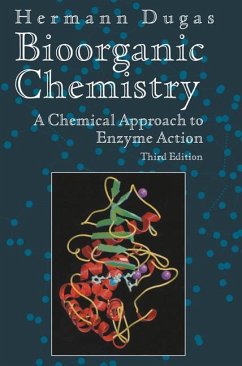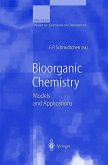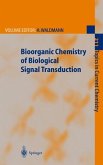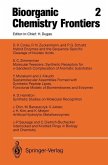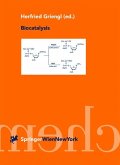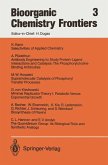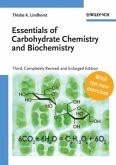The goal of bioorganic chemistry is to mimic biological processes such as enzyme action, through the synthesis of chemical models with the tools of the organic chemist. This widely-praised textbook is especially suited for the advanced undergraduate or graduate student in chemistry, biochemistry, medicinal chemistry, and pharmacology. The third edition has been substantially revised to reflect new research in the field, and features a major new chapter on self- assembly, auto-organization, and molecular devices. The outstanding figures continue to be a highlight of the book, and were described in an earlier edition as "accurate stereochemical structures...that are the best I've seen for showing the organic chemistry of biomolecules." (Quart. Rev. Biol.)
New textbooks at all levels of chemistry appear with great regularity. So me fields such as basic biochemistry, organic reaction mechanisms, weIl represented by many excellent and chemical thermodynamics are texts, and new or revised editions are published sufficiently often to keep up with progress in research. However, some areas of chemistry, especially many of those taught at the graduate level, suffer from areal lack of up-to-date textbooks. The most serious needs occur in fields that are rapidly changing. Textbooks in these subjects usually have to be written by scientists actually involved in the research that is advancing the field. It is not often easy to persuade such individuals to set time aside to help spread the knowledge they have accumulated. Our goal, in this series, is to pinpoint areas of chemistry where recent progress has outpaced what is covered in any available textbooks, and then seek out and per suade experts in these fields to produce relatively concise but instructive introductions to their fields. These should serve the needs of one semester or one quarter graduate courses in chemistry and biochem istry. In some cases the availability of texts in active research areas should help stimulate the creation of new courses. Charles R. Cantor vii Preface to the Third Edition It was over 100 years ago that Emil Fischer postulated his ingenious "lock-and-key" principle, whieh was subsequently applied to the devel opment of a modern theory of enzyme catalysis.
Hinweis: Dieser Artikel kann nur an eine deutsche Lieferadresse ausgeliefert werden.
New textbooks at all levels of chemistry appear with great regularity. So me fields such as basic biochemistry, organic reaction mechanisms, weIl represented by many excellent and chemical thermodynamics are texts, and new or revised editions are published sufficiently often to keep up with progress in research. However, some areas of chemistry, especially many of those taught at the graduate level, suffer from areal lack of up-to-date textbooks. The most serious needs occur in fields that are rapidly changing. Textbooks in these subjects usually have to be written by scientists actually involved in the research that is advancing the field. It is not often easy to persuade such individuals to set time aside to help spread the knowledge they have accumulated. Our goal, in this series, is to pinpoint areas of chemistry where recent progress has outpaced what is covered in any available textbooks, and then seek out and per suade experts in these fields to produce relatively concise but instructive introductions to their fields. These should serve the needs of one semester or one quarter graduate courses in chemistry and biochem istry. In some cases the availability of texts in active research areas should help stimulate the creation of new courses. Charles R. Cantor vii Preface to the Third Edition It was over 100 years ago that Emil Fischer postulated his ingenious "lock-and-key" principle, whieh was subsequently applied to the devel opment of a modern theory of enzyme catalysis.
Hinweis: Dieser Artikel kann nur an eine deutsche Lieferadresse ausgeliefert werden.

